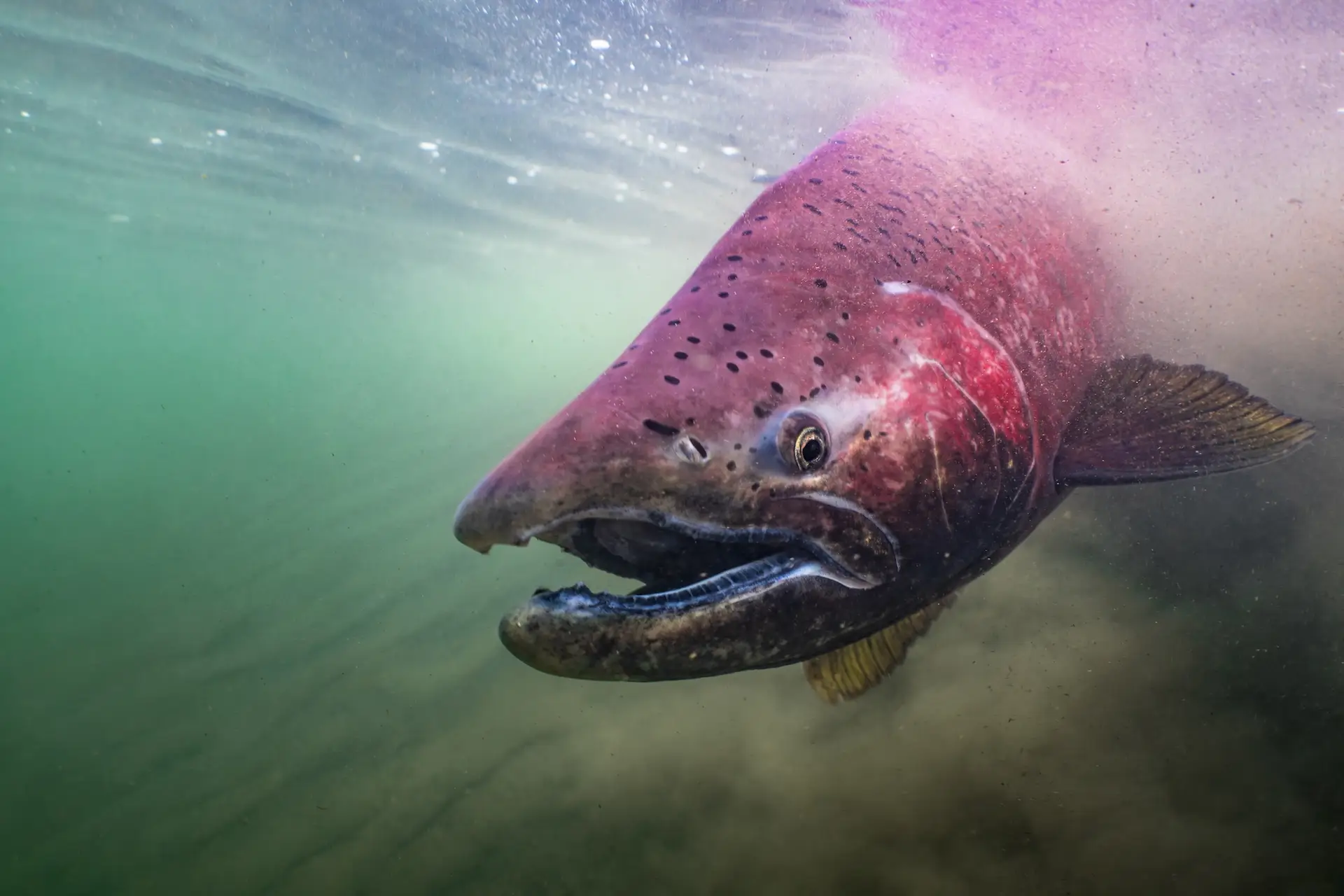
Why did you file this petition?
The Wild Fish Conservancy filed the petition because the declining trend in Alaskan Chinook’s abundance, loss of diversity and spatial distribution combined with multiple threats impacting the species, such as climate change, puts them in danger of extinction within the foreseeable future.
The Endangered Species Act is a powerful tool that can provide far greater protections and funding opportunities to enable the actions necessary to prevent the long-term decline of Chinook, both within Alaska, and coastwide.
What is the Status of Alaskan Chinook?
From Alaska’s own report on the status of Pacific Salmon escapement and commercial harvest, only 39% of the escapement goals, or the number of Chinook salmon required to sustain future generations, were met. The most recent 5-year average shows that approximately half the rivers failed to meet this crucial threshold.
For example, Alaska’s Chignik River located on the Alaska Peninsula near the village of Chignik is the largest Chinook salmon producing system on the southern shore of the Alaska Peninsula. After years of declining returns, both sport fishing and subsistence fisheries for native and non-native Alaskans were forced to close completely in 2022 and 2023.
Are Alaskan Chinook just going through a brief period of low productivity?
While salmon populations have typically experienced periods of high and low productivity, impacts from climate change have disrupted the ocean cycles and food webs salmon depend on. Given these changing conditions, historic patterns of productivity cannot be relied upon to continue unsustainable management of these populations today.
What are the Threats to Alaskan Chinook?
Many of the same threats that have plagued the decline of salmon throughout the world, including overharvest, the removal of fish for artificial reproduction in salmon in hatcheries, habitat loss, resource-extraction, and climate change.
How would ESA Listing Benefit Alaskan Chinook?
When a species is listed under the Endangered Species Act a recovery planning process is undertaken which evaluates the most pressing conservation needs to ensure the survival of the species.
Examples include but are not limited to, designating critical habitat protections, expanding or enacting marine protection along the migratory corridor and nursery rearing environment Chinook need in the ocean, management actions to transition away from mixed-stock ocean fisheries that harvest at-risk and immature Chinook salmon, and protection efforts that allow fish to adapt to a changing climate.
When will the National Marine Fisheries Service Issue a Decision?
To the maximum extent practicable, NMFS must issue a finding on whether listing Alaskan chinook may be warranted within 90 days of the petition being filed.
If NMFS determines that listing may be warranted, NMFS will perform a status review of Chinook in the areas described within the petition. NMFS should make that determination within 12 months from the date we filed the petition.
Additional information on the federal listing process under the Endangered Species Act is available on NOAA Fisheries’ website.
Additional Resources:
Join our mailing list to recieve important updates on our work, the latest wild fish news, & opportunities to take action to support wild fish.
This site is protected by reCAPTCHA and the Google Privacy Policy and Terms of Service apply.
Wild Fish Conservancy is recognized as a 501(c)3 non-profit by the IRS